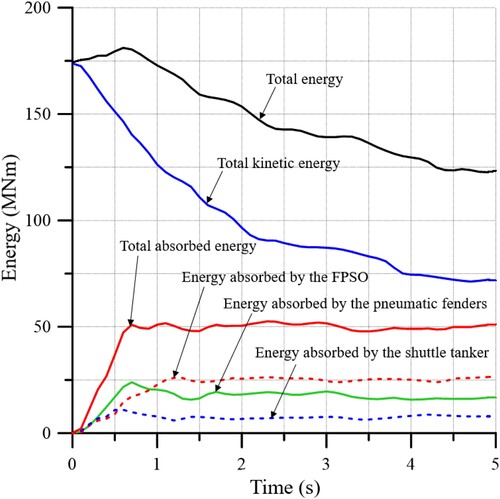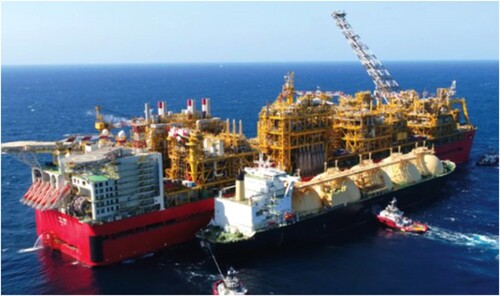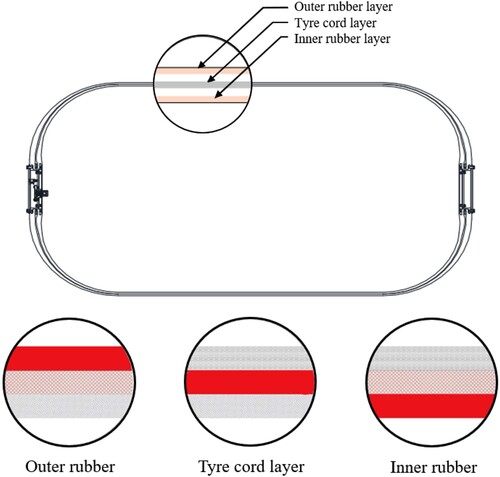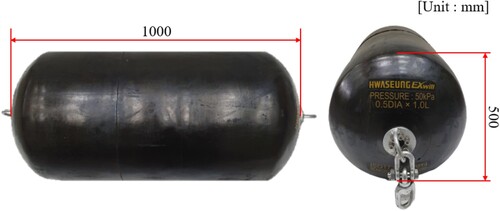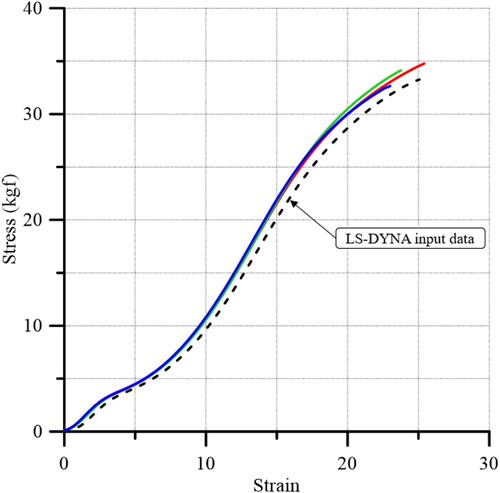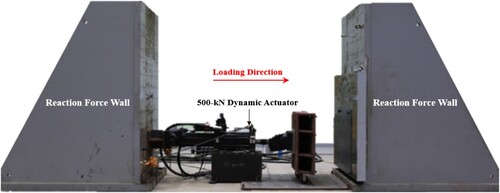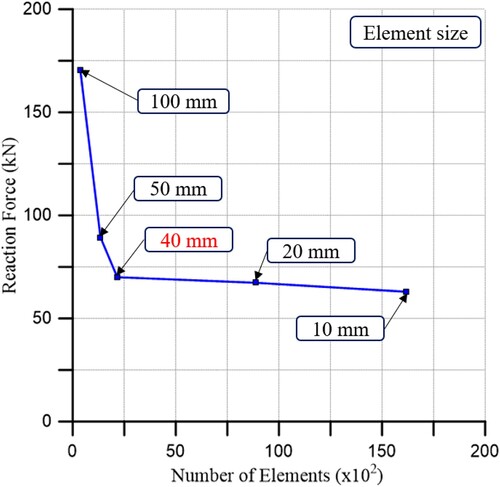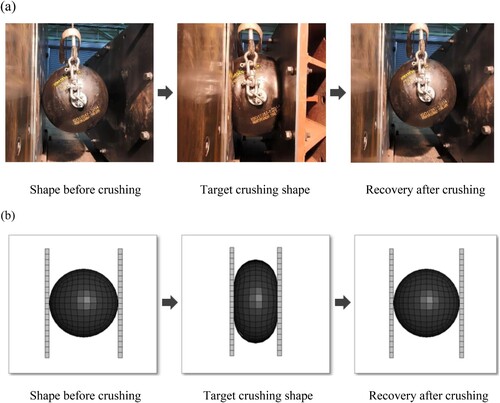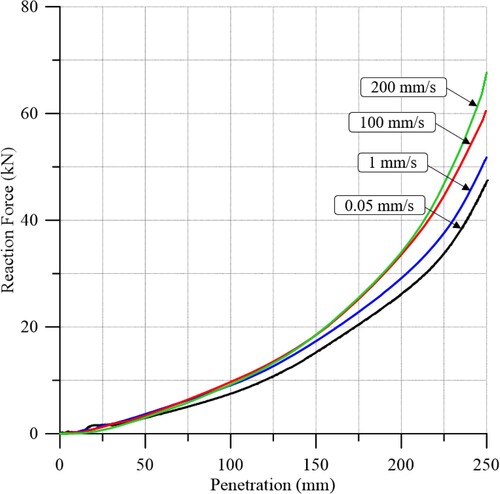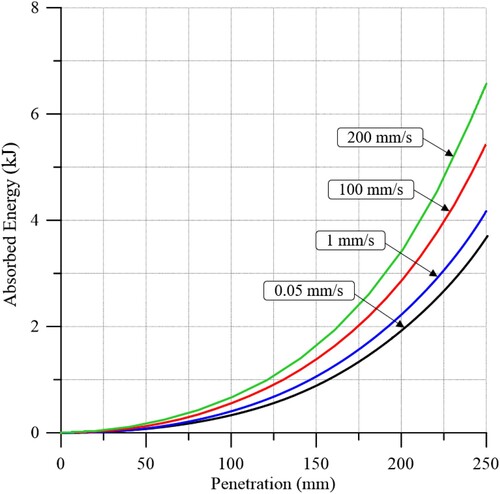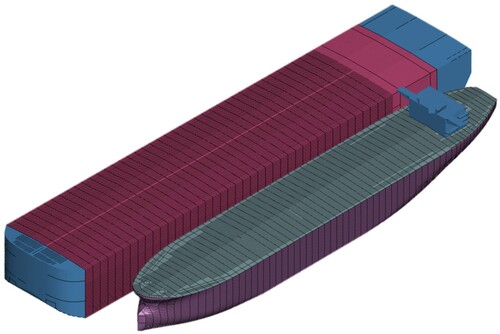Figures & data
Figure 2. Pneumatic rubber fenders (red ellipses) for absorbing and dampening the impact energy during side-by-side collisions between a ship-shaped offshore installation and a shuttle tanker.
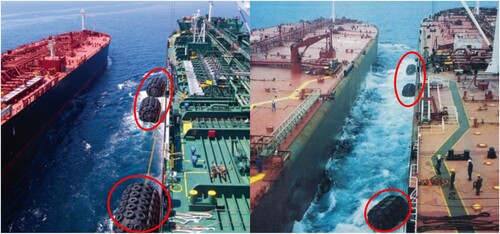
Table 1. Pneumatic rubber fender crushing test conditions.
Figure 5. Synthetic tyre cord fabrics forming the middle layer that reinforces the pneumatic rubber fender.
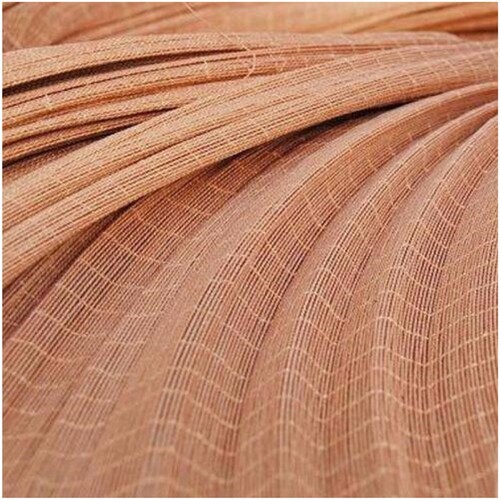
Figure 7. Schematic of the crushing test set-up for the pneumatic rubber fender: (a) elevation view, and (b) plan view

Figure 10. Finite element model of the pneumatic rubber fender developed using four-noded finite elements.
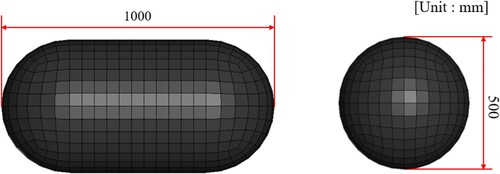
Table 2. Pneumatic fender modelling data input into LS-DYNA.
Table 3. Material properties of the rubber model.
Table 4. Definitions of the contact conditions.
Figure 19. Experimentally measured and numerically modelled absorbed energy–penetration relationships at a loading speed of 0.05 mm/s.
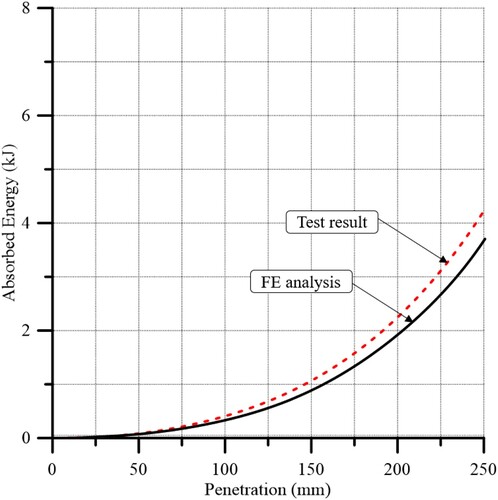
Figure 20. Experimentally measured and numerically modelled absorbed energy–penetration relationships at a loading speed of 1 mm/s.
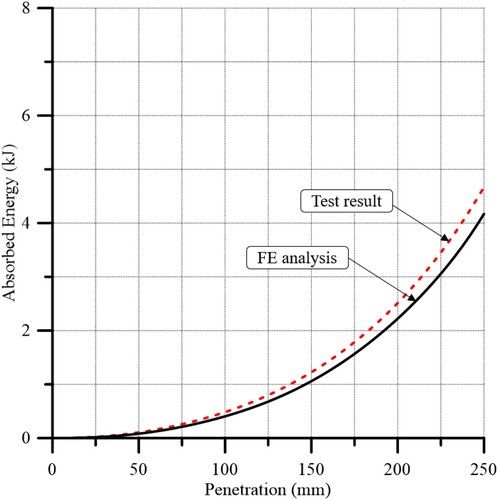
Figure 21. Experimentally measured and numerically modelled absorbed energy–penetration relationships at a loading speed of 100 mm/s.

Figure 22. Experimentally measured and numerically modelled absorbed energy–penetration relationships at a loading speed of 200 mm/s.

Table 5. Experimentally measured and numerically modelled absorption energy capacities of the pneumatic fender.
Table 6. Principal dimensions of the VLCC class FPSO and the Suezmax class shuttle tanker.
Table 7. Recommended number and size of pneumatic rubber fenders depending on the size of the tonnage (PIANC Citation2002).
Table 8. Examined case studies and the corresponding collision conditions.
Table 9. Mesh sizes for the structural crashworthiness analysis of a side-by-side collision.
Table 10. The number of elements for the structural crashworthiness analysis of a side-by-side collision.
Table 11. Material properties for modelling the hull structures of the FPSO and the shuttle tanker.
Figure 25. Finite element model of the FPSO hull equipped with five pneumatic rubber fenders and the shuttle tanker involved in a side-by-side collision.

Table 12. Dynamic properties of steel for the analysis of structural crashworthiness during a side-by-side collision.
Figure 26. Structural damage on the FPSO hull with no pneumatic runner fenders at a 2-knot side-by-side collision between a Suezmax class shuttle tanker and an FPSO: (a) side view, (b) cross-sectional view.

Figure 27. Collision-induced buckling of horizontal girders on the struck FPSO hull with no pneumatic rubber fenders.
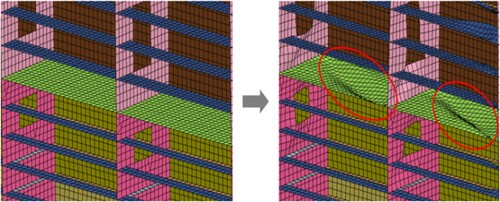
Figure 28. Change in absorbed energy components over time for the FPSO and shuttle tanker hulls with no pneumatic rubber fenders in a 2-knot side-by-side collision scenario.
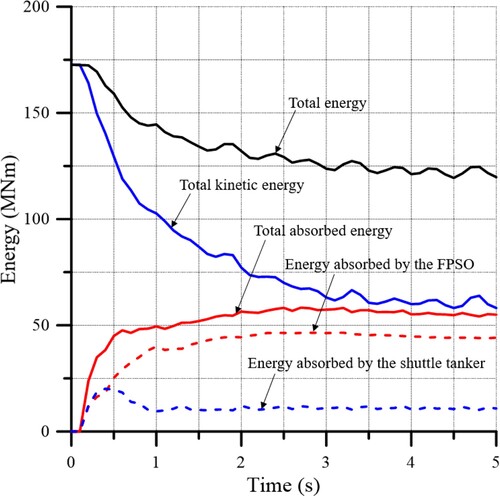
Figure 29. Change in absorbed energy components over time for the FPSO hull (equipped with 4 fenders) and the shuttle tanker hull in a 2-knot side-by-side collision scenario.
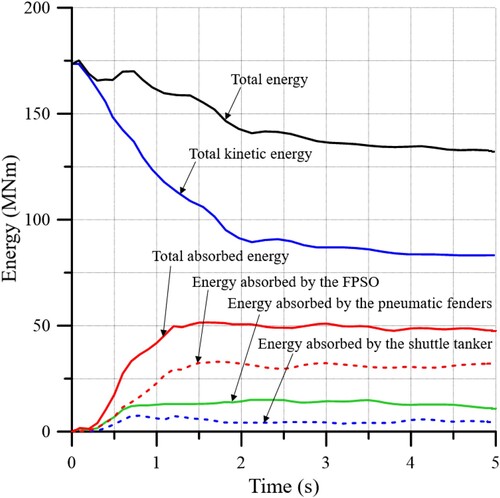
Figure 30. Change in absorbed energy components over time for the FPSO hull (equipped with 5 fenders) and the shuttle tanker hull in a 2-knot side-by-side collision scenario.
